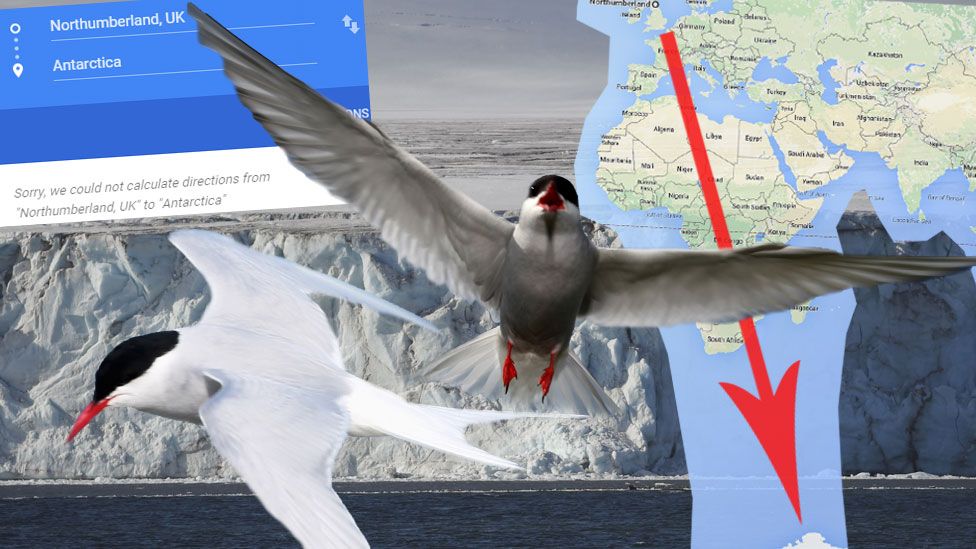Meet the creatures which migrate a REALLY long way
- Published

If you think your commute to work, school or college is tough, spare a thought for the Arctic tern.
The tiny sea bird has been named the creature with the longest known annual migration after scientists tracked it from Northumberland to Antarctica - and back. That's 59,700 miles.
But it's not alone in making *really* long journeys.
There are plenty of other species which travel the globe to find food, escape harsh weather conditions or breed.
Salmon
It may not be as long as the tern's journey - but the migration of the Pacific salmon has to be up there with the best of them.
They hatch inland in rivers and streams, before swimming for hundreds, even thousands, of miles to reach the ocean.
After several years at sea, they make their way back to the pretty much exactly the same freshwater sites where they were born, to die.
Dr Nathan Putman, Oregon State University led a study which suggested salmon are born with an in-built "magnetic map" to help them head home.
"It's like they have a map. The migration is a lot of effort and it is definitely challenging."
Monarch Butterfly
For a tiny North American butterfly, they make a pretty impressive migration.
It's thought they cover around 3,000 miles a year.
Monarch butterflies can't survive in cold conditions so they travel all over America and into Mexico to stay warm.
They also travel to be in the right place to get hold of the plants they like to eat when they're in bloom.
Because they don't live very long, they actually spend most of their lives migrating.
Northern Elephant Seal
These guys spend most of their time on the California coast.
But when they get hungry they head off on what's thought to be the second longest migration among mammals (Humpback Whales make the longest one) towards Alaska.
Like other migratory animals, the elephant seal also uses magnetic fields to help with directions.
The male and female seals follow different routes because they like different food - the males like small sharks and rays, while females prefer squid.
In winter they head back to the coast to breed. It's estimated their migration can be up to 13,000 miles.
Sooty Shearwater
These birds are the only ones that come close to taking the Arctic tern's crown with an estimated migration of 40,400 miles.
They're normally born in the UK before making huge clockwise migration to the western Atlantic in spring to spend the summer there.
Then in Summer/Autumn they move back down towards the UK to breed.
Sooty Shearwaters can cover up to 560 miles a day, with their journeys taking around takes 200 days to complete.
Find us on Instagram at BBCNewsbeat and follow us on Snapchat, search for bbc_newsbeat